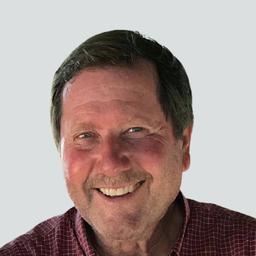We were driving across the Golden Gate Bridge when it happened. I’d mentioned to my wife that the dream of bicycling from one coast of the United States to the other was still alive—thriving in fact. Caren listened for a moment and said, “I think you should do it.”
“The hardest part, “I explained, “would be loneliness. I’d get to Montana and want to come home.” Caren said simply, “Then I’ll do it with you.”
Two years later, we began our journey across America, embarking from the small coastal town of Seaside, Oregon. My love for America was about to launch like a rocket; fueled by her beauty, her people, and her ideals. We would see them every day as we rode “from sea to shining sea.”
In a journey that would take us 73 riding days and covering 3,887 miles, perhaps the most profound highlight would occur our first morning when we reached Lewis and Clark’s Fort Clatsop. There, one of the most remarkable—and least known—events in American history happened…but more on that later.
We rode alongside the magnificent Columbia River—never leaving her side for 300 miles—before veering into eastern Washington. There, we spun through fields of wheat that surged in the wind exactly like the “amber waves of grain” of “America the Beautiful.”
We crossed the Rocky Mountains through Glacier National Park, terrain so stunningly beautiful that one writer noted, “This is where God sat when He made America.” And the words, we found, again were true: “purple mountains majesty.”
Across the Great Plains our tandem rolled along, with prairie in all directions. At times, when headwinds met us at a precise velocity and angle, we could hear the wind softly hum as it wove through our spokes. The pioneers had passed over prairie much like this, those forefathers to many who still reside in the Pacific Northwest. Their qualities of vision, commitment, and daring, to achieve their emigration of thousands of miles, was now never more vivid to us—or admired.
At Parkers Prairie, Minnesota, we rested at a World War II memorial park honoring “those of this community.” The words engraved on the memorial stone reminded us, “May this park be in memory of those who gave their last ounce of devotion from the altar of human sacrifice so that freedom might be the heritage of unborn generations.”
From Wisconsin, our path would take us south along the Mississippi River, and then east through Illinois, Indiana, and Ohio. Near Shepardstown, Virginia, we spun through the countryside of the Antietam Battlefield where America fought a war to sustain a union and free a people.
A day later, we pedaled the tandem into Washington, D.C., and stood before the Lincoln Memorial—a moment nearly as humbling as if the Great Emancipator himself were sitting before us; Lincoln, to us, emblematic of the many brilliant leaders God has so blessed America with.
With three more days of riding, we arrived in Cape May, New Jersey. And the kindness and generosity of Americans that we had experienced so often as we crossed this country was again evident when a couple we met on the Lewes-Cape May ferry would invite us to spend the night at their home.
As we stood at the edge of the Atlantic Ocean, we reflected on the greatness of the land, the people, and the ideals which make America so exquisite, unique, and free.
There, we realized that George Washington, Fredrick Douglas, Abraham Lincoln, and Martin Luther King Jr. are more than our great forefathers. They are today’s guides. We are linked to them hand-to-shoulder, with all those who came before and who will follow. Their great wisdom paved the way for the goodness America has thus far attained—wisdom that can still inspire us to greatness in our future.
And that little-known event at Fort Clatsop? Lewis and Clark’s Corps of Discovery had reached the Pacific Ocean and had to decide if they would spend the winter of 1805–06 on the south side of the Columbia or the north. The Corps, numbering 33 members at this point, included a black man named York and an Indian woman named Sacagawea.
The captains put the decision to a vote. And in a moment that transcends time, Lewis and Clark decided York would have a vote—though emancipation was still 60 years off in the future. Sacagawea would have a vote—though women’s suffrage was well over 100 years away. In that magnificent moment, Lewis and Clark made manifest Thomas Jefferson’s declaration that “all men are created equal.” Historian Dayton Duncan would later state, “It was Lewis and Clark at their best, which is America at its best.”

